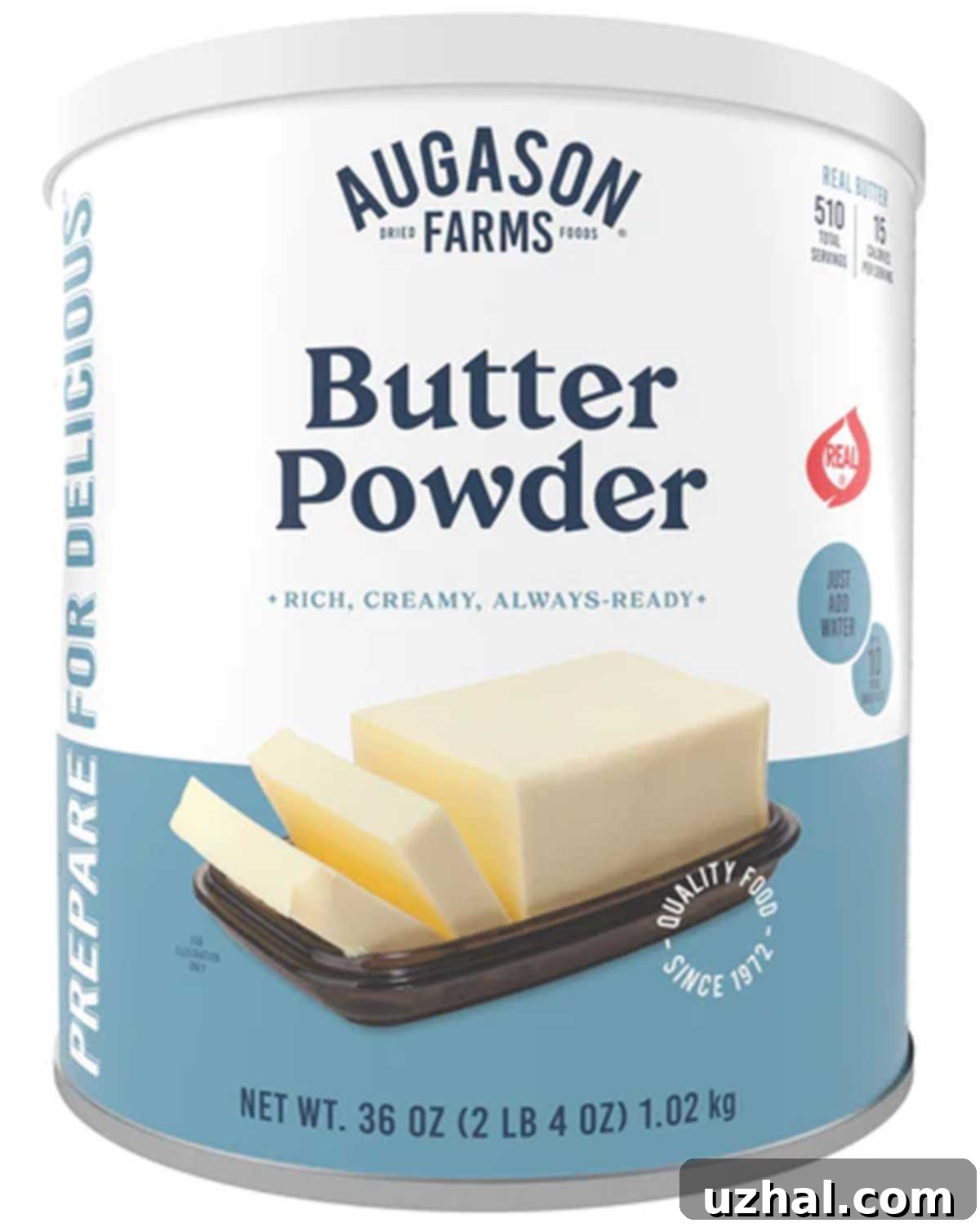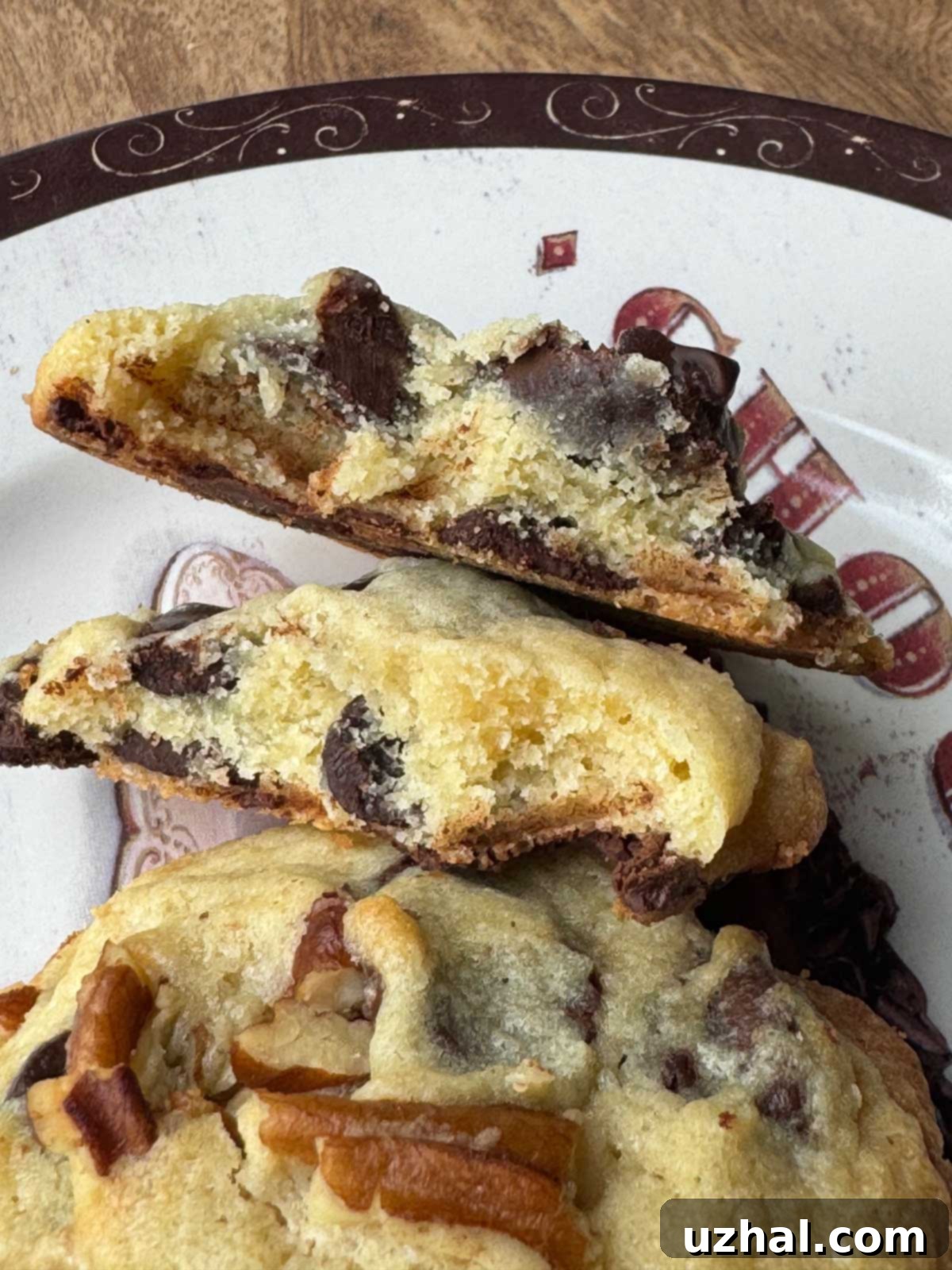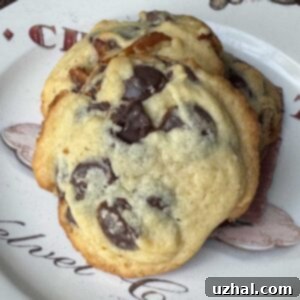Unlock Richer Flavor: The Ultimate Guide to Baking Butter Powder Chocolate Chip Cookies
When you hear “powdered butter,” your mind might conjure images of emergency rations or perhaps a relic from a bygone era of space travel. Yet, this remarkable ingredient is rapidly gaining traction in modern kitchens, offering a secret weapon for enhancing flavor and texture in a myriad of dishes. Recently, I ventured into the world of powdered butter, initially intending to use it for keto egg bread. To my delightful surprise, its true magic truly revealed itself in the creation of incredibly rich and flavorful Butter Powder Chocolate Chip Cookies!

Understanding Powdered Butter: A Culinary Game-Changer
If the mention of powdered butter triggers memories of “Butter Buds” from the 1980s, rest assured, this product is in a league of its own. Modern powdered butter is far from a mere butter-flavored seasoning; it is, in essence, real butter that has undergone a meticulous dehydration process to transform it into shelf-stable, granular particles. The most common method for its creation is spray drying, where melted butter is atomized into a chamber of hot air. This rapid evaporation removes the moisture, leaving behind a fine powder that retains butter’s inherent richness and flavor. The brand I frequently use, Augason Farms, further refines its product by incorporating salt and milk solids. These additions not only contribute to a more authentic, palatable taste when rehydrated but also enhance its performance in baking applications. While it can be rehydrated with water to form a spreadable butter substitute, its true potential often shines when used directly from the container, particularly in recipes like our chocolate chip cookies.
The beauty of powdered butter lies in its convenience and concentrated flavor. Unlike traditional butter, which requires refrigeration and has a limited shelf life, powdered butter can be stored at room temperature for extended periods, making it an invaluable pantry staple for both everyday cooking and emergency preparedness. It allows you to introduce an intense buttery essence without adding excessive moisture or altering the fat content dramatically, offering a unique advantage in fine-tuning recipes. Whether you’re aiming to boost the butteriness of a dish or simply want to keep a reliable source of butter on hand, this innovative ingredient offers a compelling solution.
The Quest for the Ultimate Buttery Chocolate Chip Cookie
The primary motivation behind incorporating powdered butter into our chocolate chip cookies was straightforward yet ambitious: to amplify the already beloved butter flavor, enrich the overall profile of the cookies, and, crucially, to achieve these enhancements without compromising the delicate balance of texture. My initial approach was simple: I used the Augason Farms butter powder straight from the can, creaming it alongside softened regular butter and sugar. This method proved incredibly effective. To simplify the baking process and minimize cleanup, I designed this recipe as an easy one-bowl affair. There’s no need for the traditional step of whisking dry ingredients—flour, baking soda, and salt—in a separate bowl. Each ingredient is added directly to the creamed mixture, ensuring a seamless and efficient baking experience. This streamlined approach makes these cookies not just delicious but also a joy to prepare, perfect for when a craving for warm, buttery chocolate chip cookies strikes.
This experimental addition of powdered butter aimed to unlock a deeper dimension of flavor, pushing beyond the standard cookie experience. By integrating it into the creaming process, the concentrated butter solids are evenly distributed, ensuring that every bite carries an unmistakable, rich buttery note. The goal was to achieve a cookie that felt luxuriously rich on the palate, a true testament to the power of enhanced butter flavor. The anticipation of the texture was equally significant; we wanted a moist interior that wasn’t overly cakey, coupled with delightful crisp edges. This balance is key to a truly satisfying chocolate chip cookie, and powdered butter promised to be the ingredient that could deliver on all fronts.
A Symphony of Flavor and Texture in Every Bite
So, how did these butter powder-infused chocolate chip cookies truly perform? Even with dough that hadn’t undergone the traditional chilling period (which can further enhance flavor and texture, prompting me to consider adding photos of chilled-dough cookies in the future), these cookies baked up beautifully, presenting a visually appealing golden hue. From the first bite, the impact of the powdered butter was undeniable. It delivers a significant flavor boost, intensifying the rich, creamy notes of butter that are so essential to a classic chocolate chip cookie. This isn’t just a subtle undertone; it’s a pronounced, delicious butteriness that elevates the entire cookie experience.
Beyond flavor, the texture achieved was equally impressive. These cookies boast a wonderfully moist interior, yet they avoid any hint of cakiness, maintaining a desirable chewiness that’s characteristic of a well-made chocolate chip cookie. They fall into the medium-thickness category, offering a satisfying bite without being overly dense or delicate. The edges bake up with a delicate crispness, providing a delightful contrast to the soft, gooey center, especially where the melted chocolate chips reside. The golden-yellow color, a visual cue of their rich butter content, adds to their allure, making them as pleasing to the eye as they are to the palate. This perfect marriage of amplified butter flavor and ideal texture makes these cookies a standout, proving that powdered butter is far more than just a novelty ingredient—it’s a baking enhancer.

Following the success of these original cookies, I experimented with larger, Gideon’s Bakery-sized versions, also featuring powdered butter, and plan to share that recipe soon. For now, this versatile chocolate chip cookie recipe is an excellent starting point, whether you’re eager to try out that large canister of powdered butter you’ve acquired or are simply curious about this intriguing ingredient. If you don’t have any on hand yet but are inspired to give it a try, you can find where I purchased my powdered butter here.
Update: After further experimentation, I discovered that slightly reducing the amount of powdered butter to 3 tablespoons yielded even better results. The cookies retained their extra buttery flavor while exhibiting less browning around the edges, allowing for a more consistent golden finish. This adjustment highlights the importance of experimentation and finding the perfect balance for your preferred taste and appearance.
Beyond Cookies: The Versatility of Powdered Butter in Your Kitchen
While these chocolate chip cookies beautifully showcase the magic of powdered butter, its utility extends far beyond just sweet treats. This shelf-stable ingredient can be a genuine asset in a wide array of savory and baked goods, offering concentrated flavor without the bulk or perishability of traditional butter. Imagine enriching your gravies and sauces with an extra layer of buttery depth, or dusting it over popcorn for an irresistible movie snack. It works wonderfully in dry mixes for biscuits, scones, or pancake batter, ensuring a consistent butter flavor even when fresh butter might be scarce.
For savory applications, powdered butter can be whisked into scrambled eggs, mashed potatoes, or even sprinkled on roasted vegetables to impart a rich, savory essence. Its ability to absorb moisture also makes it an interesting addition to spice rubs for meats, helping to create a flavorful crust. In the realm of emergency preparedness, powdered butter is a true lifesaver, providing a stable source of fat and flavor that can last for years, a stark contrast to perishable fresh butter. Its versatility ensures that whether you’re a seasoned baker, a resourceful home cook, or someone building a resilient pantry, powdered butter is an ingredient worth exploring for its convenience, enhanced flavor, and impressive shelf life.
Pro Tips for Baking with Powdered Butter
Incorporating powdered butter into your baking can elevate your results, but a few considerations can help ensure success. Firstly, always check the label of your powdered butter for added salt or milk solids, as this can influence the other ingredients in your recipe. If your powdered butter is salted, you might want to slightly reduce the amount of added salt in your cookie dough to prevent over-seasoning. When substituting or adding powdered butter, remember that its flavor is concentrated, so a little often goes a long way. Starting with the recommended amount in a recipe like this one, or experimenting with smaller additions, is a good practice.
For optimal texture, especially in cookies, ensure that your regular butter is properly softened before creaming it with the sugars and powdered butter. This creates an airy, emulsified base that is crucial for light and chewy cookies. Don’t rush the creaming process; allow sufficient time for the ingredients to become light and fluffy. While the initial cookies in this article didn’t use chilled dough, incorporating a chilling period, even just 30 minutes, can significantly improve the cookies’ thickness and depth of flavor by allowing the ingredients to fully hydrate and the fats to solidify. Finally, store your powdered butter in a cool, dry place in an airtight container to maintain its freshness and prevent clumping. With these tips, you’ll be well on your way to mastering the art of baking with powdered butter and creating extraordinary treats.
- Powdered Peanut Butter Cookies
- Powdered Sugar Chocolate Cookies
- Chocolate Meringue Sandwich Cookies
- Hershey’s Deep Dark Chocolate Cookies
- Chocolate Peanut Butter Cup Cupcakes
Recipe

Butter Powder Chocolate Chip Cookies
Anna
Pin Recipe
Equipment
-
Stand Mixer (or Hand Mixer with a large bowl)
Ingredients
- 1 cup unsalted butter, softened (228 grams)
- 3 tablespoons powdered butter (15 grams)
- ¾ cup packed light brown sugar (150 grams)
- ½ cup granulated sugar (100 grams)
- 2 teaspoons vanilla extract
- 1 teaspoon salt (Morton Kosher)
- ½ teaspoon baking soda
- 2 large eggs, room temperature
- 2 ¼ cups all-purpose flour (280 grams)
- 1 ½ cups semi-sweet or dark chocolate chips or chunks (255 grams)
Instructions
-
Preheat your oven to 350°F (175°C). Line several baking sheets with parchment paper to prevent sticking. For a slightly darker, crispier cookie, you can increase the oven temperature to 375°F.
-
In the bowl of a stand mixer fitted with the paddle attachment (or using a large bowl and a hand mixer), combine the softened unsalted butter, powdered butter, packed light brown sugar, and granulated sugar. Beat on medium speed until the mixture is light, fluffy, and creamy, which typically takes about 3-4 minutes. Remember to stop occasionally and scrape down the sides of the bowl to ensure all ingredients are thoroughly incorporated.
-
Once the butter and sugar mixture is light and creamy, scrape down the sides of the bowl again. Add the vanilla extract, salt, and baking soda. Beat for another minute or so until these ingredients are well mixed into the butter mixture. Next, add the eggs one at a time, beating for 30 seconds after each egg is added until fully incorporated and the mixture is smooth.
-
Reduce the mixer speed to low. Gradually add the all-purpose flour, mixing until it is about halfway blended into the wet ingredients. At this point, add all the chocolate chips. Continue to beat on low speed just until the flour is fully blended and no streaks remain. Be careful not to overmix the dough, as this can lead to tough cookies.
-
For thicker cookies with a deeper, more developed flavor, chill the cookie dough for at least 30 minutes, or even overnight. You can chill the dough directly in the mixing bowl, covered with plastic wrap, or scoop out individual cookie dough balls onto a plate, cover them, and chill.
-
Drop heaping tablespoons of cookie dough (or use a medium cookie scoop for consistency) onto the prepared baking sheets, ensuring they are spaced approximately 2 inches apart to allow for spreading. Bake for 12-14 minutes, or until the edges are golden brown and the centers are just set. Baking time may vary slightly depending on your oven and cookie size.
-
Once baked, remove the cookies from the oven and let them cool on the baking sheets for about 5 minutes. This allows them to firm up before transferring. After 5 minutes, carefully transfer the cookies to wire racks to finish cooling completely. Enjoy your rich, buttery, and perfectly textured chocolate chip cookies!
Notes
